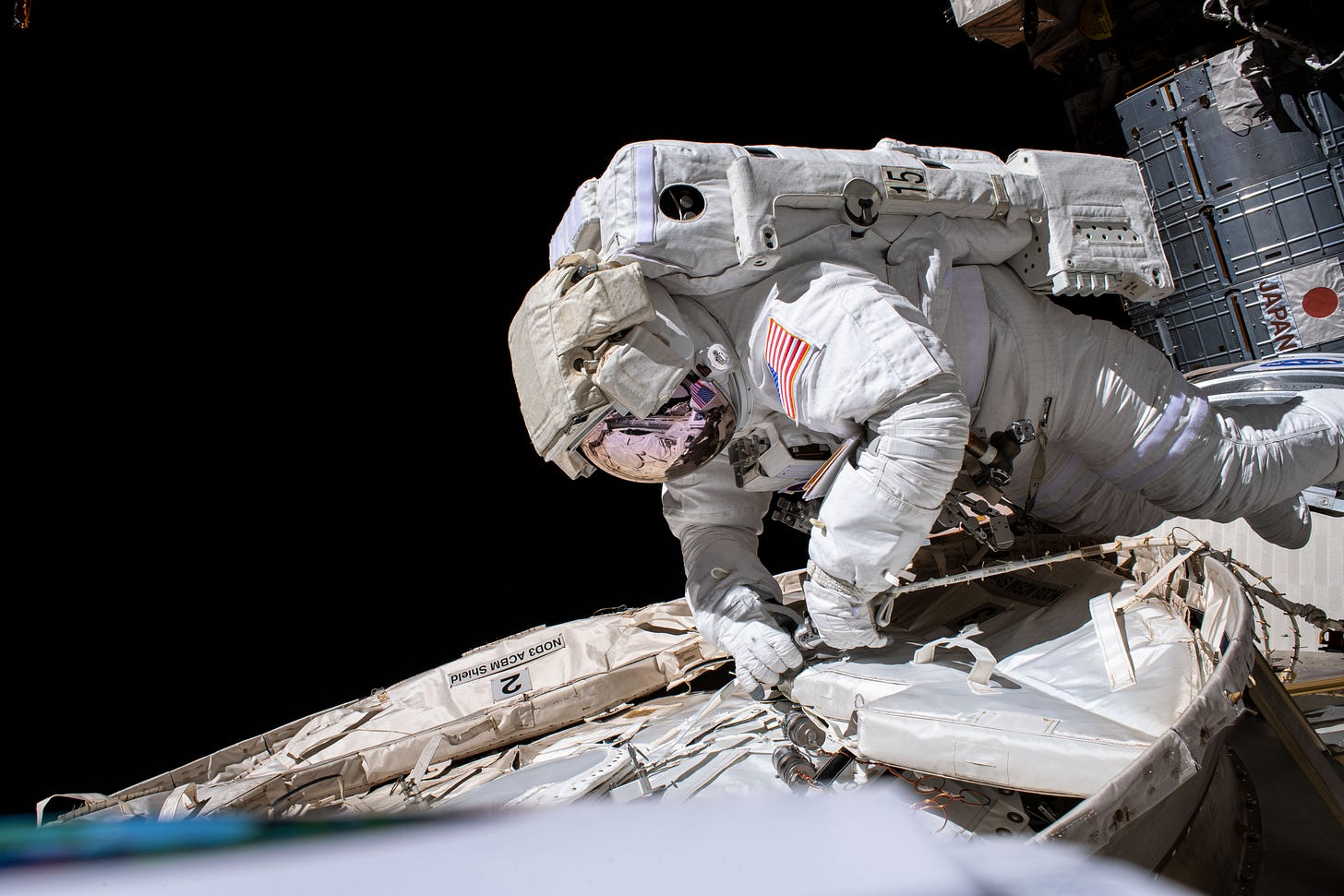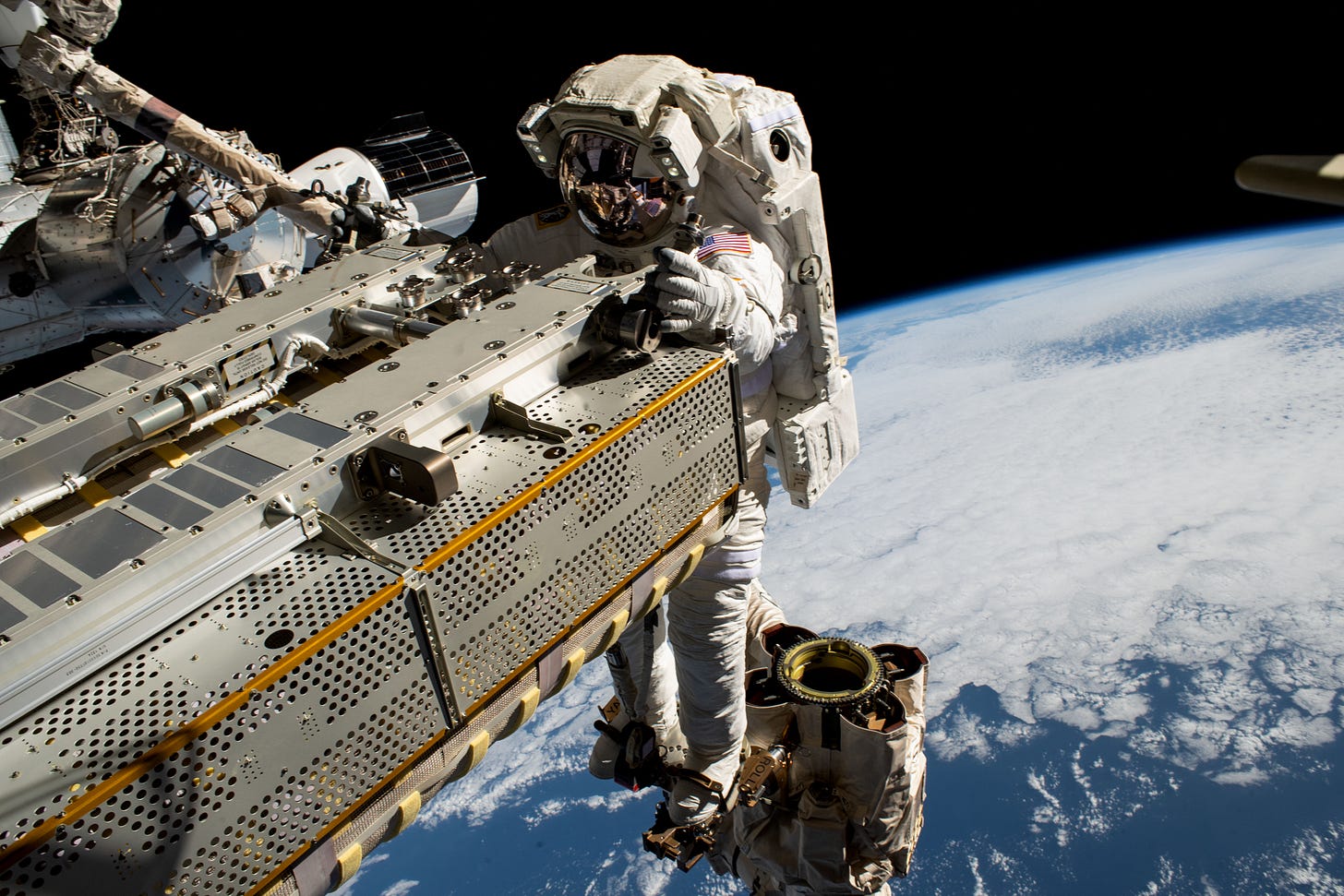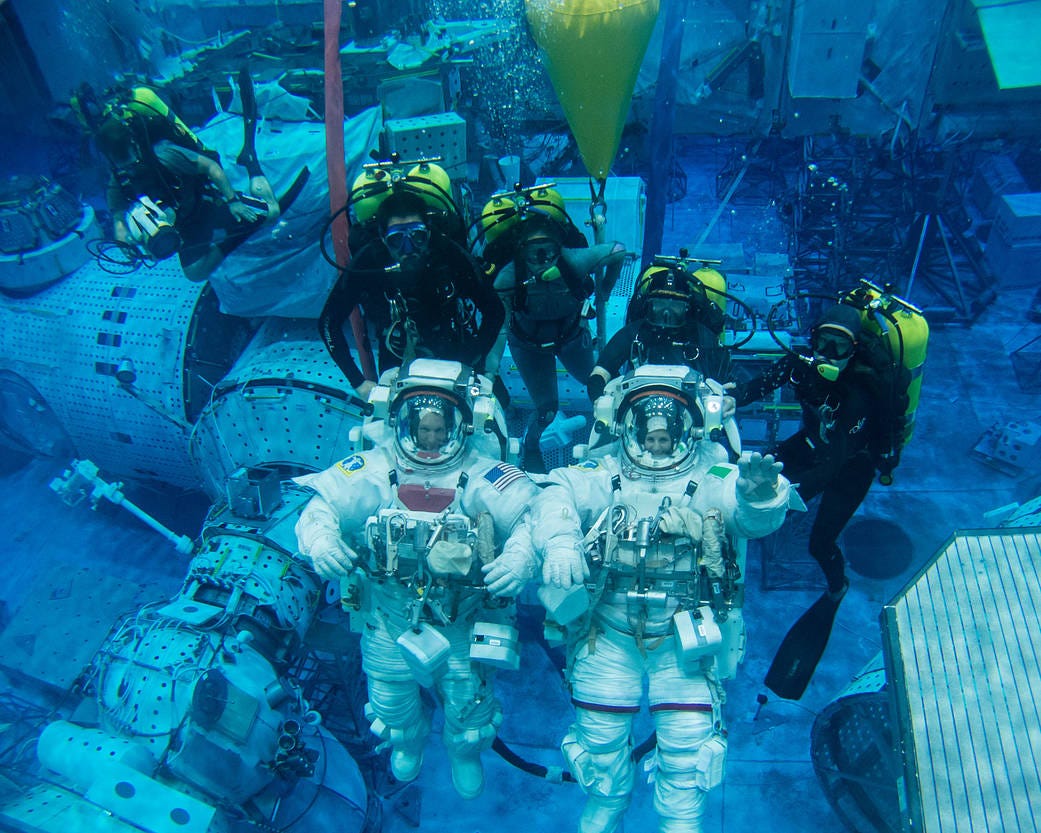Imagine floating above Earth, with nothing between you and the endless cosmos but a suit—no gravity, no air, just silence and stars. That’s a spacewalk. Or, if you want to get all NASA about it, it’s called an EVA—Extravehicular Activity. It’s not just one of the riskiest things a human can do; it’s also one of the most awe-inspiring.
So, what exactly is a spacewalk, how do astronauts prepare for it, what challenges do they face, and why does it matter so much in our journey through the stars? Let’s dive deep.
What Is a Spacewalk?
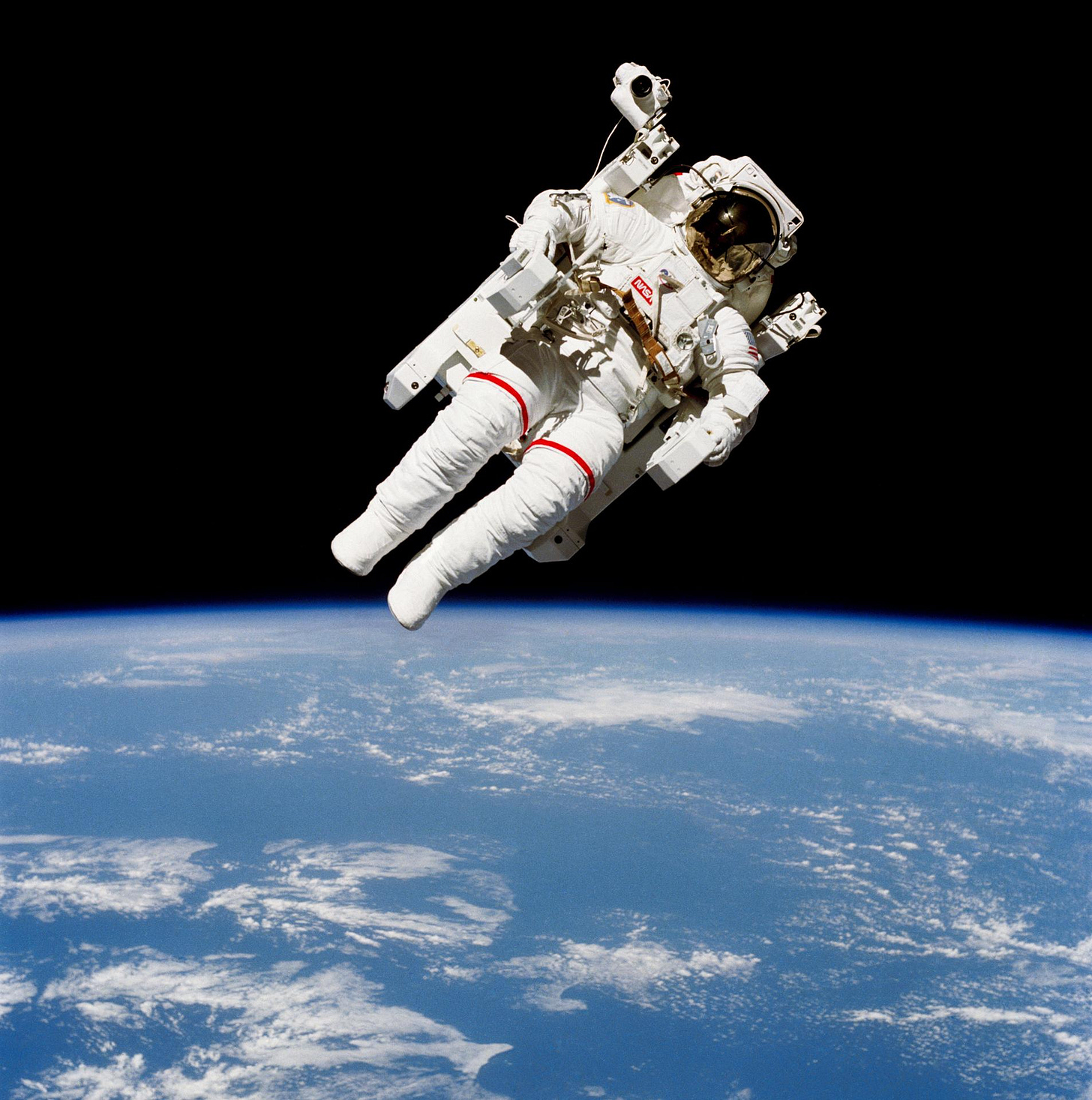
A spacewalk is when an astronaut leaves the pressurised cabin of their spacecraft or space station and ventures out into open space. They're still tethered, of course—no one wants to drift into the void—but for all practical purposes, they’re “outside,” floating in the vacuum.
There’s no air, no pressure, and temperatures swing from -150°C to over +120°C depending on whether you're in shadow or sunlight. The only thing keeping the astronaut alive is the suit, which works like a tiny spaceship around their body.
Why Do Astronauts Go on Spacewalks?
Astronauts don’t go outside just to take in the view (though wow, what a view!). They suit up for real work. Some reasons include:
Repairs: Fixing broken systems on spacecraft or satellites.
Assembly: Building the International Space Station (ISS) happened piece by piece—many of them installed during spacewalks.
Upgrades: Replacing outdated hardware, like old solar panels or batteries.
Science: Installing instruments, collecting cosmic dust samples, or even testing how materials behave in space.
Rescue: Rare but serious—retrieving stuck hardware or even rescuing a fellow astronaut.
Think of it as extreme outdoor maintenance. No pressure—except all of it.
A Quick History of Spacewalks
First EVA Ever (1965): Soviet cosmonaut Alexei Leonov became the first human to exit a spacecraft. He floated outside for 12 minutes during the Voskhod 2 mission. But it almost ended in tragedy—his suit ballooned from internal pressure, and he barely got back in.
First American EVA (1965): Just months later, Ed White stepped out of Gemini IV, hand-thrusting himself with a gas gun while marveling at the view.
Moonwalks (1969-1972): Apollo astronauts, starting with Neil Armstrong and Buzz Aldrin, walked on the Moon’s surface—technically EVAs, but on a whole other level.
Hubble Repair (1993 onwards): Fixing and upgrading the Hubble Space Telescope took several iconic EVAs.
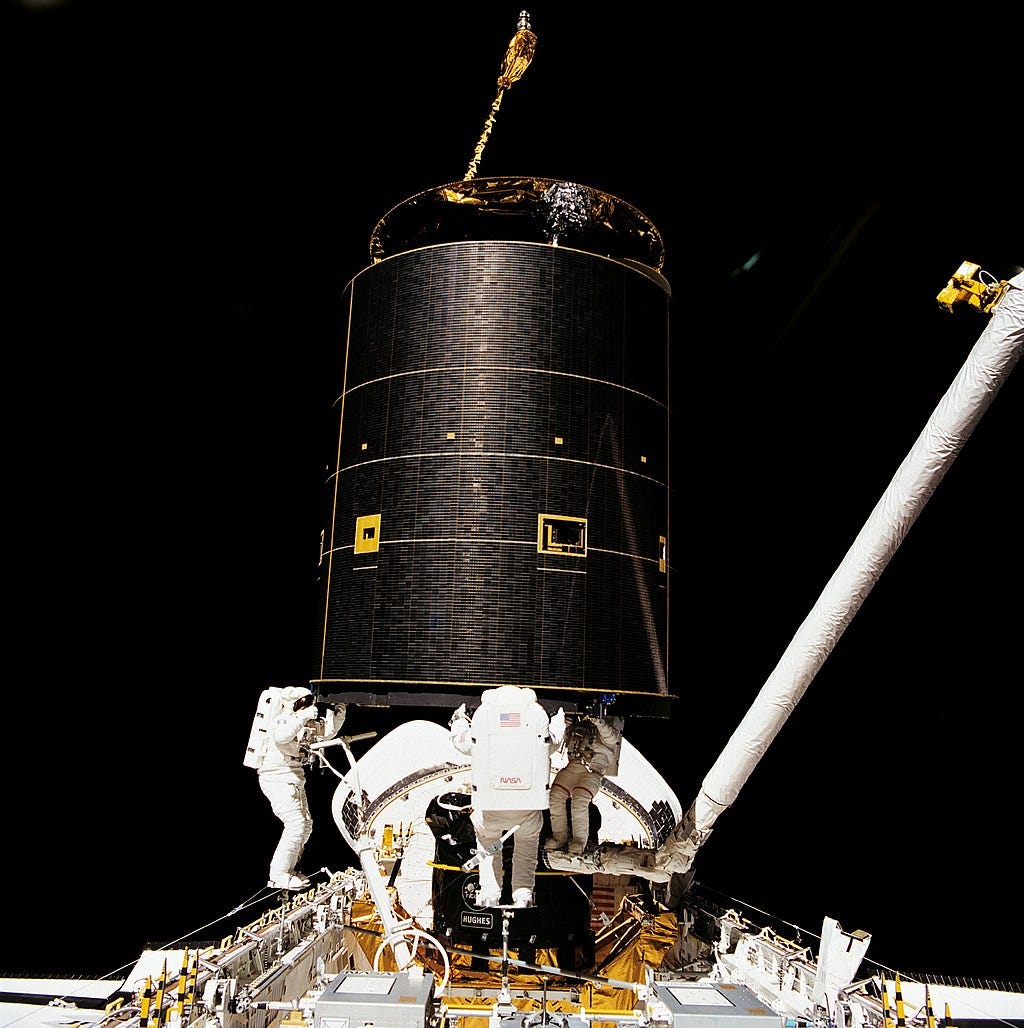
ISS Construction (1998–present): The ISS was built through over 260 spacewalks (and counting), each adding modules, trusses, or solar arrays.
Longest EVA: In 2001, astronauts Jim Voss and Susan Helms performed a marathon 8-hour, 56-minute spacewalk on the ISS.
Training for a Spacewalk
You don’t just roll out of bed and float into space. EVA training is hardcore.
Neutral Buoyancy Lab (NBL): A giant swimming pool the size of a football field in Houston, Texas. It holds 6.2 million gallons of water and contains mock-ups of the ISS. Astronauts train underwater to mimic zero gravity. Weighted suits give the sensation of floating.
Virtual Reality Simulations: VR headsets and haptic gloves let astronauts rehearse complex maneuvers down to the finger.
Suit-Up Drills: Putting on the Extravehicular Mobility Unit (EMU) is like climbing into a personal spacecraft. It takes 45 minutes just to get dressed.
Timeline Rehearsals: Every EVA has a strict timeline. Astronauts rehearse each step repeatedly, so nothing is left to chance.
Meet the Spacesuit: Your Life Support System
A spacewalking astronaut wears the EMU (Extravehicular Mobility Unit)—the most advanced clothing ever made. Here's what it's packing:
Key Features:
Pressurised Layer: Keeps the vacuum out.
Thermal Layers: Reflective insulation for hot/cold extremes.
Liquid Cooling Garment: Water-filled tubes regulate body temperature.
Helmet with Gold Visor: Shields eyes from harsh solar glare.
Gloves: Designed for dexterity, but still bulky.
Oxygen Supply: Enough for ~8.5 hours.
Backpack (PLSS): Primary Life Support System—controls temperature, oxygen, CO₂ removal, and comms.
Types of EVA Suits:
EMU (NASA): Used for ISS EVAs.
Orlan (Russia): Bulkier, semi-automated suits used since the 1970s.
xEMU: NASA’s next-gen suit, being developed for Artemis lunar missions.
Spacesuits for Mars: In early design stages—will need to handle dust storms, lower gravity, and walking, not floating.
Learn more about the spacesuits in our previous articles here and here.
Types of Spacewalks
Not all EVAs are the same. Here are the broad categories:
Planned EVAs: Scheduled in advance for routine tasks—maintenance, upgrades, or experiments.
Contingency EVAs: Emergency repairs or unforeseen issues. These can be high-risk and high-stakes.
Translational EVAs: Involve moving across large distances on the ISS or a spacecraft using tethers and handrails.
Lunar EVAs: Done on the Moon’s surface (Apollo era, soon Artemis).
Planetary EVAs (future): Expected on Mars, potentially using pressurised rovers and more flexible suits.
Challenges of Working in Space
You think your job is tough? Try holding a wrench in a puffy glove, while floating in a space oven.
Physical Fatigue: Spacewalks are exhausting. The suit resists your every move, so astronauts often get blisters on their fingers just from gripping tools.
Radiation: No atmosphere means no protection from solar or cosmic rays.
Temperature Extremes: One side of your body could be boiling, the other freezing, depending on your orientation.
Visibility Issues: Helmets fog up. Reflections are harsh. You have a narrow field of view.
Micrometeoroids: Even a paint-chip moving at orbital speed can punch through a visor.
Isolation and Communication Delays: You’re alone, relying on radio chatter with Mission Control and your EVA buddy.
And yet… they do it. Again and again.
Legendary Spacewalkers
Anatoly Solovyev (Russia): 16 EVAs, a total of over 82 hours in space.
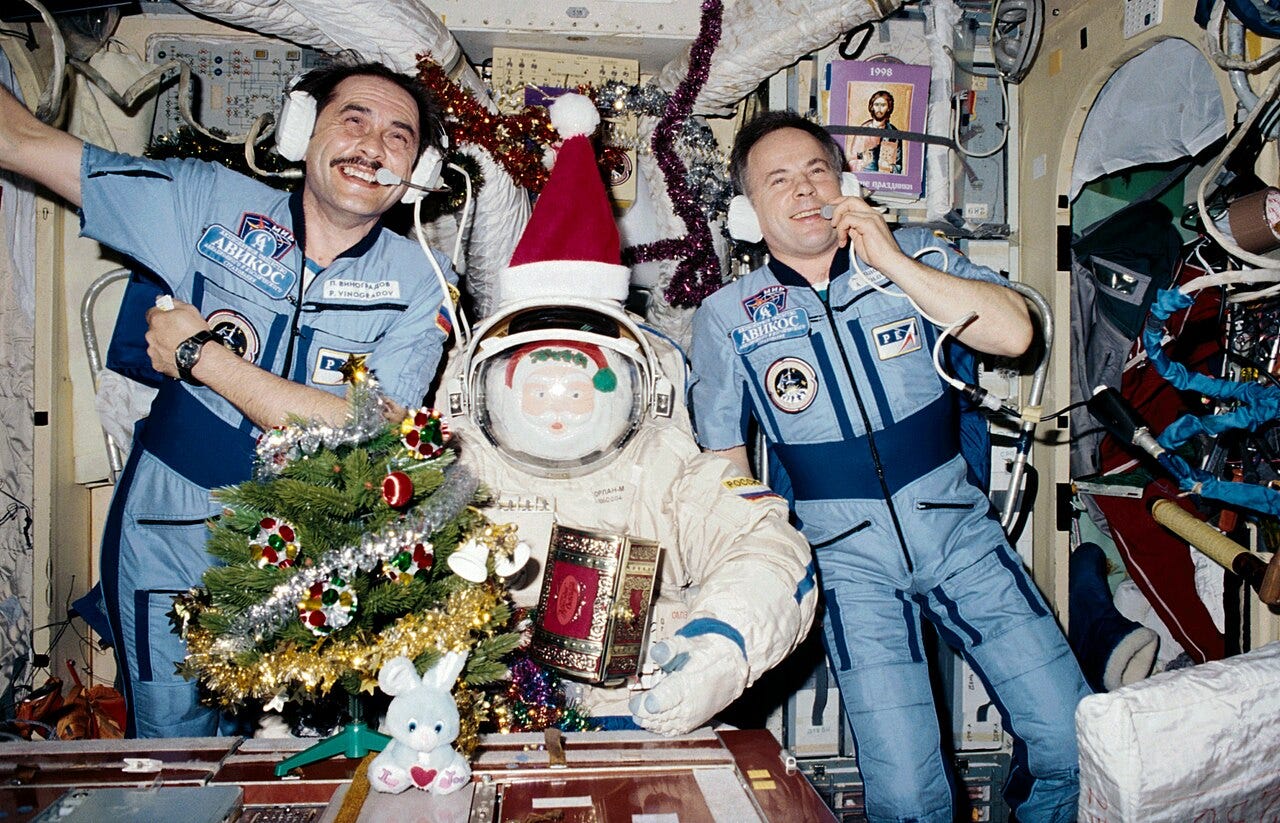
Peggy Whitson (USA): Most EVA time by a woman—10 spacewalks, 60+ hours.
Chris Hadfield, Luca Parmitano, and Sunita Williams: Known not just for technical excellence but for making space relatable through videos, photos, and stories.
Why Spacewalks Matter
Spacewalks aren’t just sci-fi eye candy. They’re essential for:
Keeping the ISS alive and functioning.
Learning how to survive and work beyond Earth.
Proving technologies that will one day build Moon bases or Mars outposts.
Inspiring generations to dream bigger.
When an astronaut floats above Earth, tethered to a thin cord, balancing between death and discovery—it reminds us what humanity is capable of.
A spacewalk is the ultimate blend of courage, science, and survival. It’s engineering under pressure. It’s motion without gravity. It’s humans showing up in the harshest environment imaginable—and getting the job done.
So next time you look up at the night sky, remember: someone’s been out there, quite literally walking among the stars.



